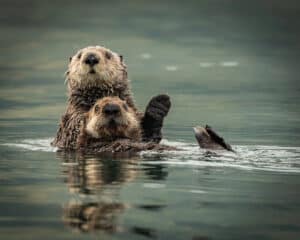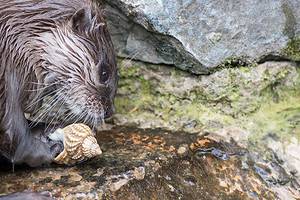Sea otters (Enhydra lutris) are incredible marine mammals that have captured the hearts of millions of people worldwide. They are the heaviest members of the weasel family and they have some of the most dense fur in the entire animal kingdom. In terms of marine mammals, however, they come in small. Of course, when your competitors for size are blue whales, you really can’t compete. Today, we’ll stray away from size and explore one particular habit that sea otters have. Surely, you’ve seen videos of sea otters holding hands while they sleep. We’re going to tell you why this happens. So, why do sea otters hold hands while they sleep? Well, let’s explore some of the reasons now.
Sea Otters Hold Hands to Stay Together
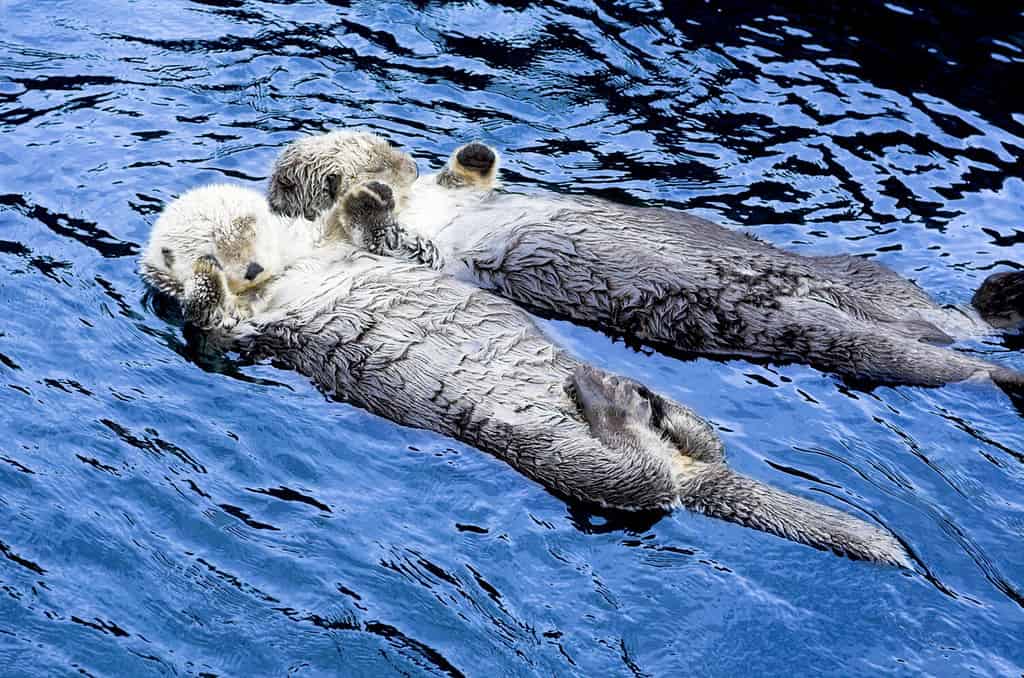
©fred goldstein/Shutterstock.com
Sea otters are social creatures and they like to spend time in groups. These groups have a variety of names, such as “romp”, “family”, “bevy” and “lodge”. A group of sea otters who are in the water together are often called a “raft”. According to the Alaska Department of Fish and Game, these groups can be number over 1,000 sea otters. This social behavior extends far past waking hours. In fact, napping sea otters often hold each other’s paws to avoid being separated by the current while they sleep.
Holding Hands for Safety
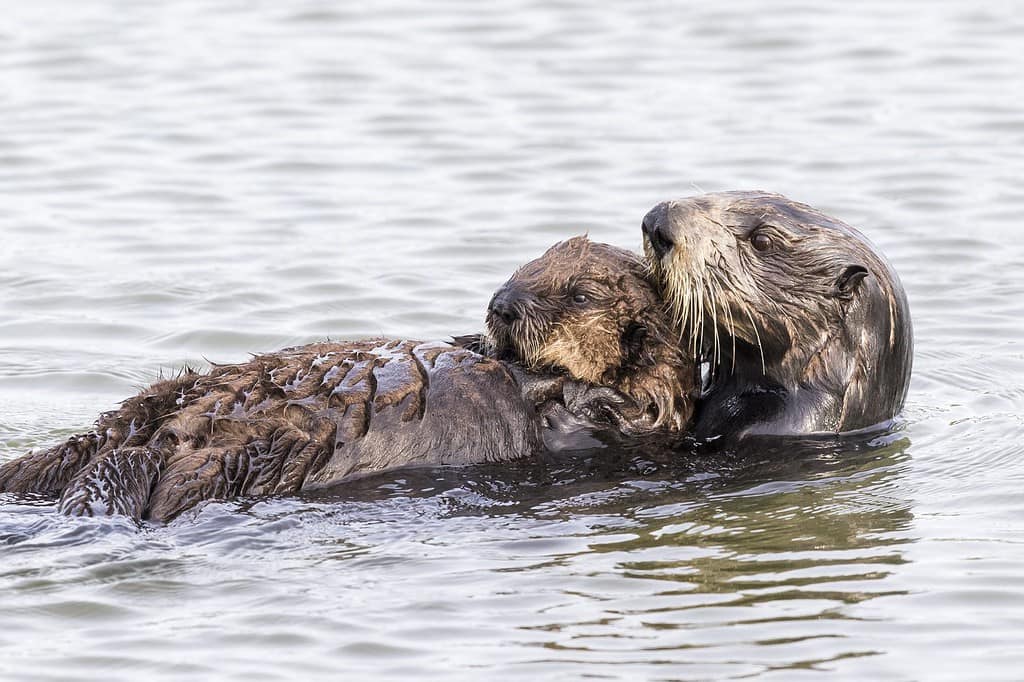
A Southern
Sea Otter
(Enhydra lutris nereis)cradles her pup while swimming on her back – Monterey Peninsula, California.
©Brian Lasenby/Shutterstock.com
Sea otters have a large number of natural predators. Sharks, coyotes, bears, eagles, and some whale varieties hunt sea otters for food and sport. While humans pose the largest threat to sea otter populations, these other threats pose the need for defense mechanisms to ensure survival. A sea otter that has been separated from its family faces a higher risk of predation. Thus, sea otters hold hands in pairs and groups to reduce vulnerability to attacks. This is especially true for mothers with their young.
Sea Otters Hold Hands With Their Young

Sea otter babies are called “pups”.
©Chase Dekker/Shutterstock.com
Most infants are especially vulnerable to the threats of the world around them. Sea otter pups are no exception. These adorable pups don’t start learning how to swim until they are four weeks of age. This means they must rely heavily on their mothers for the support they need to get around. Sea otter mothers carry their pups on their chests or hold hands with them as they float in the water. This isn’t just during sleeping hours. Mother and pup stay together constantly for about eight months, during which time the pup needs frequent extra support from its parent.
Holding Hands for Warmth
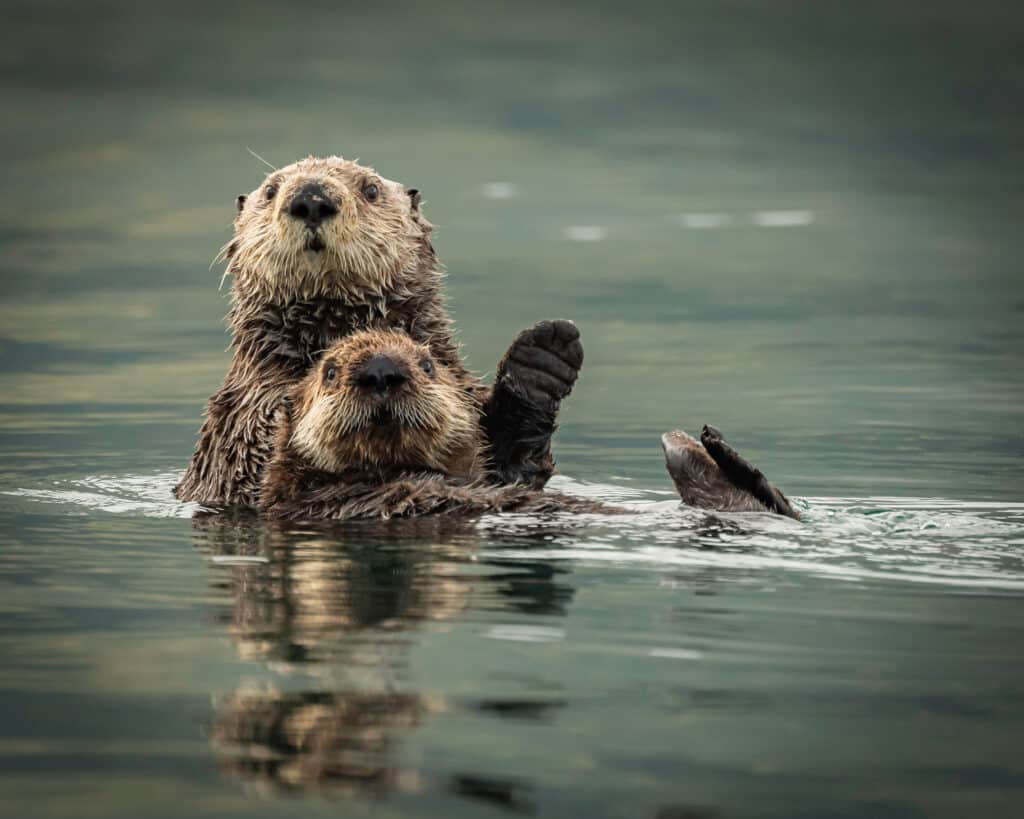
Sea otters in Kodiak, Alaska.
©Laura Hedien/Shutterstock.com
Finally, we must acknowledge the deep cold of the ocean. Sea otters are definitely equipped to handle the cold – their thick, incredible coats rival most other mammals. However, they have a very low body fat content. Their fur alone is not enough to keep them alive in frigid oceanic temperatures. In order to compensate for a lack of warming blubber, sea otters have to eat a lot of food. In fact, a sea otter will eat up to 25 percent of its body weight in one day. Additionally, sea otters have a muscle mechanism called “skeletal muscle thermogenesis”. This is a unique energy conversion system that allows these marine mammals to leak metabolic heat from their muscles to keep their body temperature up. Rafts of sea otters do not have to rely as heavily on this energy conversation when they are close together. Pairs or groups of sea otters holding hands can conserve their body heat. This allows them to expend less energy and, sometimes, even eat less food to stay warm and alive.
Summary
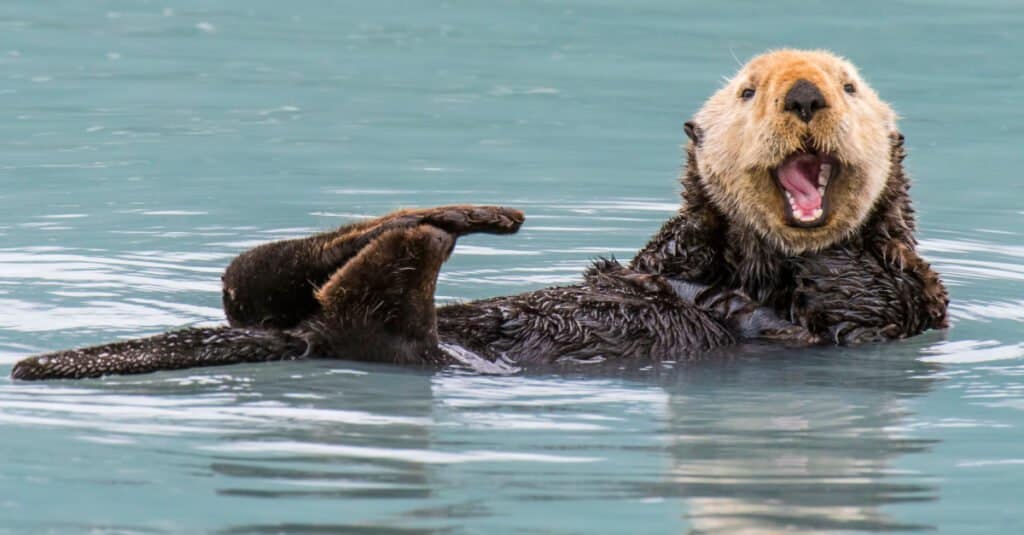
Turns out, sea otters don’t just hold hands to look cute.
©iStock.com/David McGowen
We’ve learned a lot today about the benefits sea otters reap from holding hands. Let’s go over them one more time, just to sum up what we’ve learned.
- Sea otters hold hands to avoid drifting apart from each other.
- Safety is a key reason for sea otters to hold hands.
- Mother otters hold hands with their pups, especially while the babies are still learning to swim.
- Sea otters hold hands to conserve body heat and lower internal energy consumption.
The photo featured at the top of this post is © fred goldstein/Shutterstock.com
Thank you for reading! Have some feedback for us? Contact the AZ Animals editorial team.



